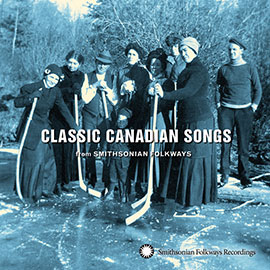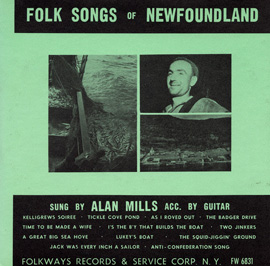Summary
In this series of lessons students will learn about the culture and economy of Newfoundland, learn to sing the folksongs “I’s the B’y” and “Jack Was Ev’ry Inch a Sailor,” learn a folk dance, play recorder and hand chimes, and create a dramatic play.
Suggested Grade Level: 4–5
Country: Canada
Region: North America
Culture Group: Newfoundland
Genre: Folk music, work songs
Instruments: Voice, guitar, recorder, hand chimes
Languages: English
Co-curricular Areas: Language arts, geography, history, physical education
National Standards: 1, 2, 3, 5, 6, 8, 9
Prerequisites: Ability to play the recorder
Objectives:
- Learn about musical heritage of Newfoundland, including its historical background and local economy
- Learn a dance to the song “I’s the By,” sing the song, and learn to play the song on the recorder.
- Learn the song “Jack Was Ev’ry Inch a Sailor” and play an accompaniment to the song on hand chimes.
Material:
- “I’s the B’y” recording
- Map
- Smart Board or projector to display materials
- Device to play recording
- Guitar or piano
- Recorders
- Hand chimes
- Folk Songs of Newfoundland by Alan Mills from Smithsonian Folkways Recordings
- Liner notes from Folk Songs of Newfoundland
Lesson Segments:
- Singing “I’s the B’y” (National Standards 1, 9)
- Dancing “I’s the B’y” (National Standard 8)
- Playing “I’s the B’y” on Recorder (National Standards 2, 5)
- Performing “Jack Was Ev’ry Inch a Sailor” (National Standards 1, 2)
- Creating a Drama (National Standards 1, 2, 3, 8)
Lesson 1: Singing “I’s the B’y”

“I's the B'y”
from Classic Canadian Songs From Smithsonian Folkways (2006) | SFW40539
- Student will locate Newfoundland on a map. Point out to the students that Newfoundland is an island.

- Ask students what they think people do for work on an island. Point out to students that people in Newfoundland often make their living by fishing. Tell students that the waters around Newfoundland are loaded with cod fish.
- Explain that often the folk songs people sing describe events in their daily lives.
- Students will learn a folk song from Newfoundland called “I’s the B’y.” Play the song “I’s the B’y” from Folk Songs of Newfoundland.
- Display the lyrics (found in the album liner notes) for the students and discuss what kind of activities the song mentions (sailing, fishing, and dancing). Show on the map the places that are mentioned in the song (Fogo, Twillingate, Moreton’s Harbour, Bona Vista).
- Have students sing the song.
Assessment: Ask students to name specific things they have learned about Newfoundland (its location, its economy, folksongs). Aurally assess that students sing correct pitches.
Lesson 2: Dancing “I’s the B’y”
- Teach students the following dance to “I’s the B’y”:
- Students form two lines facing each other during introduction:

- Students only dance during the verse and chorus, not during the interludes between chorus and verse.
- Students step into the center over four beats, then back out over four beats

Student from top of line A and student from bottom of line B take four counts to meet in the center and four counts to bow.

Students who are still in line link arms with the person across them while students in the center are bowing.

Students in the center join hands sashay four counts to bottom, four counts to top, and four counts to return to center.

Last four counts student A goes to bottom of line A, Student B goes to top of Line B.

Repeat the steps until everyone has had a turn
Assessment: Visually assess that students are moving on the beat and performing the correct dance movements.
Lesson 3: Playing “I’s the B’y” on Recorder
- Have students learn the song “I’s the B’y” on the Recorder using the attached sheet music.
Assessment: Have students perform the song in small groups for the teacher. Check for accuracy.
Lesson 4: Performing “Jack Was Ev’ry Inch a Sailor”

“Jack Was Every Inch a Sailor”
from Folk Songs of Newfoundland (1953) | FW06831
- Play recording of the song “Jack Was Ev’ry Inch a Sailor” from Folk Songs of Newfoundland.
- Display the lyrics (see the liner notes) for the students and have them find the following locations on a map: Baffin Bay, Bacalhao Island, Indian Harbor, and Labrador.
- Teach students hand chime accompaniment using the following hand chimes: A, B, C, D, E, F, and G.
- To create chords, tell students to play their hand chime when they see the following colors:
RED = C, E, G
BLUE = G, B, D, F
GREEN = G, B, D
YELLOW = D, F, A
Now,
'twas twenty-five or thirty years
Since Jack first saw the
light;
He
came into this world of woe
One dark and stormy
night.
He was
born on board his father's ship
As she was lying
to,
'Bout twenty-five or thirty miles
Southeast of Bacal-
hao.
Jack was every inch a sailor,
Five and twenty years a whaler,
Jack was every inch a sailor,
He was born upon the deep blue sea.
Assessment: Visually and aurally assess that students are playing the correct pitches at the right time and playing the hand chime with correct technique.
Lesson 5: Creating a Drama
- Read the lyrics to the verses of “Jack Was Ev’ry Inch a Sailor” aloud and have students use un-pitched percussion, found sound, vocal sound effects, and dramatic movement to create a story about Jack.
- Allow the students to create a simple dance to the chorus of “Jack Was Ev’ry Inch a Sailor.”
- Give a performance of the dramatic play the students have created about Jack, having some students sing the chorus with hand chimes accompaniment in between the verses.
Now, 'twas twenty-five or thirty years
Since Jack first saw the light;
He came into this world of woe
One dark and stormy night.
He was born on board his father's ship as she was lying to,
'Bout twenty-five or thirty miles
Southeast of Bacalhao.
When Jack grew up to be a man,
He went to Labrador,
He fished in Indian Harbor
Where his father fished before.
On his returning in the fog,
He met a heavy gale,
And Jack was swept into the sea
And swallowed by a whale.
The whale went straight for Baffln's Bay
'Bout ninety knots an hour,
And ev'ry time he'd blow a spray,
He'd send it in a shower.
"Oh, now," says Jack unto himself,
"I must see what he's about."
He caught the whale all by the tail
And turned him inside out.
Assessment: Check that students are able to accurately recreate the original mood of the “Jack was Ev’ry Inch a Sailor” through their own interpretation of it. Are they singing, playing and dancing accurately, confidently, and in time with each other?


vs.2
Sods and rinds to cover your flake
Cake and tea for supper
Codfish in the spring o'the year
Fried in maggoty butter
vs.3
I don't want your maggoty fish
They're no good for winter
I could buy as good as that
Down in Bonavista
vs.4
I took Liza to a dance
As fast as she could travel
And every step that she did take
Was up to her knees in gravel
* Pete Seeger told a story about how many have pointed to a woman from Texas nicknamed “Hootin’ Annie” to explain the etymology for this type of get-together. He insisted that the first time he heard the word “hootenanny” was in Seattle, Washington. This name beat out “wingding” by a nose for the sing-alongs he hosted in New York City during the 1950s and 1960s. The actual etymology of hootenanny can be traced to the Scottish word hogmanay, an important type of celebration in the Scottish calendar. Most likely, this term was genericized to signify any type of festive get-together among immigrant communities in the United States. Thanks to Pete Seeger, it became part of the American folk revival vernacular.
** This melody is only an approximation. Each verse changes slightly based on different ornamentation and syllabic treatment of the lyrics. This change is part of what makes ballads interesting.






